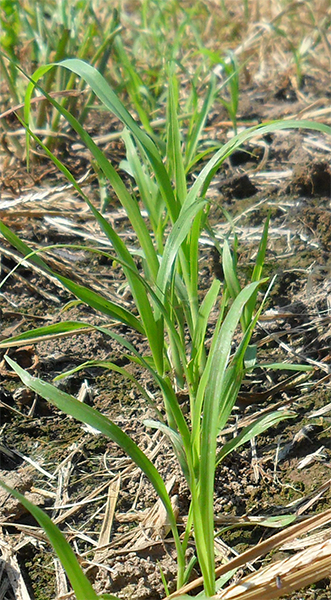Successful Seeding
 Seed is the basic building block to a forage or crop stand. Whether establishing a new stand or improving an old stand, actions can be taken to ensure that newly planted seed produces a healthy stand. Seed is one of the cheaper inputs into a grazing system, and this cost should be offset by pasture production. Taking steps to prepare for and perform successful seeding can reduce the risk of poor germination and poor seedling establishment. Providing proper growing conditions is essential.
Seed is the basic building block to a forage or crop stand. Whether establishing a new stand or improving an old stand, actions can be taken to ensure that newly planted seed produces a healthy stand. Seed is one of the cheaper inputs into a grazing system, and this cost should be offset by pasture production. Taking steps to prepare for and perform successful seeding can reduce the risk of poor germination and poor seedling establishment. Providing proper growing conditions is essential.
Seeds need to be put into the ground at the specific time in order to maximize germination rate and development of seedlings. Germination is largely dependent on temperature. If seeds are planted too early, the cold, wet conditions may cause poor germination and fungal diseases which will make for a weak forage stand. If planted too late in the season, high temperatures, lack of moisture, and competition from weeds and other plants may reduce seedling success. In general, cool-season species, which are usually seeded in late winter or early spring, best germinate between 45-55°F, while warm-season species, usually seeded in the spring or early summer, at 55-65°F. The optimal temperature for germination varies between plant species. Keep in mind that soil temperatures are usually lower than air temperatures.
The condition or preparation of the seedbed can impact germination rate and seeding success. Seed-to-soil contact is necessary for seed germination. A seed needs to absorb approximately its own body weight in water in order to start germinating. Areas where soils are cloddy or loose may extend the germination period or cause sporadic emergence of seedlings. Compacted soils can negatively affect seeds and developing seedlings by reducing the availability of water and oxygen needed for proper development. The seedbed should be fine and firm. The preparation of the seedbed is dependent on the seeding technique being used. When broadcasting seed or using a no-till method, a seedbed is not prepared but existing vegetation must be controlled.
Incorrect seeding depth is the main cause of seeding failure. Often, seeds are planted too deep and this can be disastrous to seedling establishment. Seeds contain food storage that is used for energy and growth until the plant is able to produce its own food through photosynthesis. If seeded too deep, the developing seedling may exhaust its food reserve before it reaches the surface. Lack of sufficient oxygen may also negatively affect the developing seedling. The ideal depth of seeding is dependent on the species. Most forage species have fairly shallow seeding depths. Equipment needs to be adjusted to seed at an acceptable depth for the species used. On average, this depth will only be ¼ to ½ inches deep. Some seed should be visible on the surface. Seeding too deep is the root of many seeding failures.
|
Seeding depth for common forages |
Inches below soil surface |
|---|---|
|
Kentucky Bluegrass, White Clover, Alsike Clover, Turnips |
¼ |
|
Orchardgrass, Tall Fescue, Smooth Bromegrass, Alfalfa, Red Clover, Ryegrass |
¼ - ½ |
|
Foxtail Millet, Pearl Millet |
½ - ¾ |
|
Sorghum/Sudangrass hybrids |
½ - 2 |
|
Rye, Wheat, Barley, Corn, Triticale, Oats, and Soybeans |
1 – 2 |
Many factors can affect the success of seeding. The seed planted needs to be high quality seed with the ability to germinate and produce healthy plants and needs to be of a species and variety that is adapted to the area. The suggested seeding rate should be used for ideal results. Suitable soil temperature, moisture, and oxygen are required to provide proper conditions for germination and seedling establishment. Seeding at the proper time and at the proper depth are vital to successful seeding and seedling establishment. Seed-to-soil contact allows the seed to access the water needed to initiate germination. Providing the nutrients needed is necessary for the seedlings to establish and to produce a healthy plant. Perform and utilize a soil test to apply the fertilizer and lime needed. Seedlings will also need water and sunlight to continue growth. Controlling competition of weeds or other plants is also important for seedling establishment. Providing proper conditions for seed germination and seedling establishment is crucial to produce a healthy, thick forage stand.
Categories:
General
Establishment/Renovation


